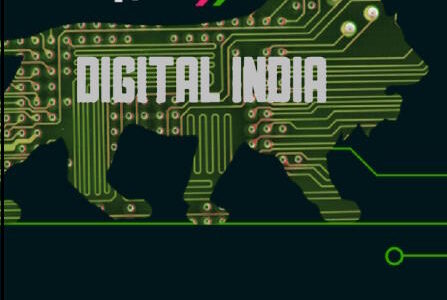Authors: Sona Mitra, Devika Oberai, and Sayak Sinha
Published: 19th January in Hindu BusinessLine

According to the Global Gender Gap Report 2023, women make up only 29.2% of all STEM (Science, Technology, Engineering and Mathematics) workers across 146 countries. In India, research by Muralidhar and Ananthanarayanan (2023) highlighted that across 100 Indian universities, only 16.6% of the overall STEM faculty were women. Within this, the latest All India Survey on Higher Education (2020-21) reports women make up 42.3% of the sample in STEM education- including undergraduate, postgraduate, MPhil, and PhD courses. However, within this too, girls are concentrated in life sciences, with programs such as B.Tech comprising only 28.7% of women. Across premier institutions such as IITs, women constitute about 20% of the sample.
The gaps in STEM arise due to certain factors that operate in the early phases in girls’ education. Social conditioning arising from existing norms and perceptions about the roles of girls and women in the society often leads in shaping the choices that girls make while enrolling themselves into higher education. The conditioning of young children continues even within the school systems where the curriculum and pedagogical practises undermine the self-esteem and confidence of girls.
In order to address these gaps at the entry level, interventions that inspire younger girls to meaningfully engage with STEM need to take shape early. Programmes like Vigyaan Jyoti implemented by the Dept. of Science and Technology comprising of activities such as counseling, role-model interactions, etc. currently target high school students. Similar interventions targeting younger students implemented at an earlier stage could prove useful. Similarly, fortifying Foundational Literacy and Numeracy outcomes through increased financial investment, gender-responsive teacher-training modules and robust assessment and monitoring frameworks can all contribute to improved higher-education outcomes for girls.
The other major challenge is the retention of women within the STEM ecosystem. Early data from Key Global Workforce Insights Report (2015) suggest that even when women choose STEM careers , 45% reported challenges in upward mobility and as many as 81% believed that there is a gender-bias in the internal evaluation processes. Further, the government’s labourforce survey in 2020-21 suggests a gender pay-gap with men earning 35 percent more than women across all sectors, thus demotivating the intent to stay in the labor force. Evidence from professors at IIT Kanpur found that women working as scientists in lab-based occupations face isolation in male dominated labs that often manifest in lack of support for women colleagues, and losing out on networking opportunities for women that hinder upward mobility. Such trends often also end up in undervaluing women’s research and findings within the labs.
Promoting women and retaining them through targeted interventions by key actors becomes critical. At an institutional level, policies that afford flexibility of time, comprehensive child-care provisions, and supportive infrastructure are crucial in creating an environment conducive to sustained participation of women. Addressing the gender-pay gap in STEM holds potential to incentivize women to persist in STEM careers. The Dept. of Science and Technology has introduced the GATI (Gender Advancement for Transforming Institutions) charter which is a voluntary, signatory charter to nudge research institutions to support diversity and inclusion. The charter encourages gender-agnostic hiring, maternity leaves, non-discriminatory appraisals, etc. and has shown promising results across 30 pilot institutions such as IIT Delhi, University of Delhi, Jamia Millia Islamia, etc. Making these charters mandatory rather than voluntary, thus, has the potential to retain more women in prestigious institutions.
Facilitating re-entry is essential for retaining women in the field. Returnship programs adopted by few companies, have demonstrated promise in facilitating the reintegration of women into workplaces after career breaks, thereby allowing them to resume their professional trajectories. Mahindra’s ‘Back to Mahindra’ initiative is specifically designed to aid former women employees transition back to work. The Federal Bank recently introduced the ‘Maternity Work Buddy’ initiative, offering support to expectant mothers by providing updates on the workplace during their maternity leaves. The HCL-Tech Returnship and Microsoft’s Leap Program offer short-term professional engagements to those out of the workforce.
While increasing women’s participation in STEM is challenging and layered with several dimensions – it can be meaningfully addressed by increasing targeted interventions as already discussed. The state has an important role – as the most powerful actor, it can not only raise awareness and improve its own initiatives but also effectively activate the private sector participation to enable entry and re-entry of women and girls in STEM education and occupations.
—
Sona and Sayak are at the Initiative for What Works to Advance Gender Equality (IWWAGE), and Devika is an Associate at The Quantum Hub (TQH).


 What would your elderly father’s response be if they received an emergency video message from you requesting a large sum of money? With rapid advances in artificial intelligence, normal human reaction to such situations can easily be exploited through the creation of deepfakes.
What would your elderly father’s response be if they received an emergency video message from you requesting a large sum of money? With rapid advances in artificial intelligence, normal human reaction to such situations can easily be exploited through the creation of deepfakes.
 The Telecommunications Bill 2023 has been notified into law; it is now an Act. While the revamp of the primary 1885 legislation that has so far governed telecommunications in India is a welcome move, the new law has led to mixed reactions.
The Telecommunications Bill 2023 has been notified into law; it is now an Act. While the revamp of the primary 1885 legislation that has so far governed telecommunications in India is a welcome move, the new law has led to mixed reactions. 
 In this scenario, legally mandated paid period leaves funded by employers are likely to, first, only be offered to a small subsection of women working in the urban corporate sector, and, second, may serve to create additional barriers for those women who are yet to enter formal employment. By imposing an additional cost on employers linked only to employees who menstruate, the unintended adverse impact on women’s participation in the workforce may end up far outweighing the benefit of any such legislation. Further, it discriminates against small and medium enterprises, nearly a fifth of which are led by women, which may lack financial resources to meet these legal obligations.
In this scenario, legally mandated paid period leaves funded by employers are likely to, first, only be offered to a small subsection of women working in the urban corporate sector, and, second, may serve to create additional barriers for those women who are yet to enter formal employment. By imposing an additional cost on employers linked only to employees who menstruate, the unintended adverse impact on women’s participation in the workforce may end up far outweighing the benefit of any such legislation. Further, it discriminates against small and medium enterprises, nearly a fifth of which are led by women, which may lack financial resources to meet these legal obligations.
 When technologies like AI evolve at exponential rates there is an inordinate risk of widespread non-compliance. Additionally, enforcement becomes challenging, and regulations can quickly become redundant. This creates widespread uncertainty and undue liability risks. Ultimately, prescriptive regulation can inhibit competition since only those market participants with the adequate risk appetite will continue to innovate.
When technologies like AI evolve at exponential rates there is an inordinate risk of widespread non-compliance. Additionally, enforcement becomes challenging, and regulations can quickly become redundant. This creates widespread uncertainty and undue liability risks. Ultimately, prescriptive regulation can inhibit competition since only those market participants with the adequate risk appetite will continue to innovate.
 Multi-pronged efforts and rising public awareness has helped India dent the under-reporting problem to a certain extent, with recent trends indicating more survivors coming forth to report GBV. However, even accounting for this, GBV casts an ominous shadow on India’s aspirations to foster women-led development. The International day for the Elimination of Violence Against Women, observed on 25th November, and the ensuing 16 Days of Activism are thus an opportune time to reflect on what India can do better to prevent GBV and protect survivors.
Multi-pronged efforts and rising public awareness has helped India dent the under-reporting problem to a certain extent, with recent trends indicating more survivors coming forth to report GBV. However, even accounting for this, GBV casts an ominous shadow on India’s aspirations to foster women-led development. The International day for the Elimination of Violence Against Women, observed on 25th November, and the ensuing 16 Days of Activism are thus an opportune time to reflect on what India can do better to prevent GBV and protect survivors.
 The year 2023 marks a milestone as India becomes the world’s most populous country, accompanied by the promise of a burgeoning working-age population (15-59 years) that could drive an economic boom. However, this could be hampered by a lower number of women in the workforce. Government surveys reveal a decade of low rates of workforce participation (WPR) of women at a mere 26.6% (2021-22), further exacerbated by women’s confinement to low-paying and low-productivity jobs in the informal sector.
The year 2023 marks a milestone as India becomes the world’s most populous country, accompanied by the promise of a burgeoning working-age population (15-59 years) that could drive an economic boom. However, this could be hampered by a lower number of women in the workforce. Government surveys reveal a decade of low rates of workforce participation (WPR) of women at a mere 26.6% (2021-22), further exacerbated by women’s confinement to low-paying and low-productivity jobs in the informal sector.
 It is widely known that women’s labour force participation in India needs policy attention. Although 66.8% women in India are in the working age, their labour force participation rate stands at a mere 35.6%, compared to men (81.8%); and their employment is mostly confined to the informal sector.
It is widely known that women’s labour force participation in India needs policy attention. Although 66.8% women in India are in the working age, their labour force participation rate stands at a mere 35.6%, compared to men (81.8%); and their employment is mostly confined to the informal sector.
 The Quantum Hub (TQH) organised a policy dialogue on the proposed Digital India Act (DIA) – an upcoming legislation that aims to replace the Information Technology Act, 2000 (IT Act) to provide a comprehensive principle-based legal framework for the digital sector in India. Held in partnership with the US-India Strategic Partnership Forum (USISPF) on October 12, 2023 in New Delhi, the event featured two panel discussions on the contours of DIA and the principle of safe harbour thereunder.
The Quantum Hub (TQH) organised a policy dialogue on the proposed Digital India Act (DIA) – an upcoming legislation that aims to replace the Information Technology Act, 2000 (IT Act) to provide a comprehensive principle-based legal framework for the digital sector in India. Held in partnership with the US-India Strategic Partnership Forum (USISPF) on October 12, 2023 in New Delhi, the event featured two panel discussions on the contours of DIA and the principle of safe harbour thereunder. 




